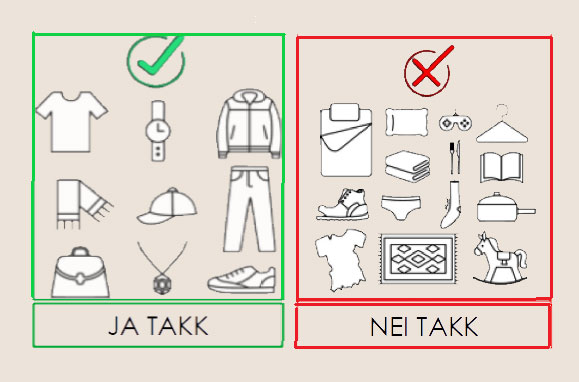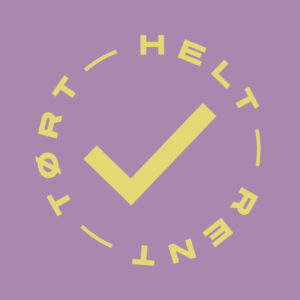Frequently Asked Questions
1) What can you give to Norge Gir?
It is important that the clothes are whole, clean and dry . Dirty and hollow clothes can not be resold as there is no system for washing and repairing the clothes before they are sorted out to the second-hand market.
Wet clothes must never be delivered for reuse as these mold in the bags and potentially also damage other clothes.
2) How often do we empty the container?
Normally we empty the container every week – but depending on the season and needs.
3) What does Norge Gir do with the money we get when the clothes are sold?
When all expenses for collecting the clothes have been paid, e.g. wages, vans, diesel, tolls and insurance, etc. The profits from the clothing collection are donated as scholarships to volunteers who will work on Humana People to People’s development projects in Africa, Asia and Latin America.
4) Who has given permission to place the container?
Normally it is the one who owns the land or rents it, e.g. the store manager where the container is located. It can also be the municipality if it is placed on municipal land. Container is ONLY placed with written agreement.
5) Does Norge Gir provide any second-hand shops nearby?
No, all clothes are exported without sorting, except garbage that is removed.
6) Who is the leader of Norge Gir?
Norge Gir is part of the Stiftelsen Den Reisende Høgskole and is registered in Ullensaker municipality. Stiftelsen Den Reisende Høgskole is registered in the Norwegian Brønnøysund Register. CEO of Norge Gir Klesinnsamling is Jan Bjørke, with a permanent address at Dalstuvegen, 12056 Algarheim.
7) What kind of organization is Stiftelsen DRH Norway / Norge Gir?
Stiftelsen Den Reisende Høgskole is an independent organization with no specific religious or political ties.
The profits from the clothing collection are donated as scholarships to volunteers who will work on Humana People to People’s development projects in Africa, Asia and Latin America.
8) What happens to the donated clothes?
After we have collected the clothes, we sell them to sorting centers abroad, where they decide which clothes can be used again and which should be recycled, which can be sold in Europe, and which are exported to Africa.


